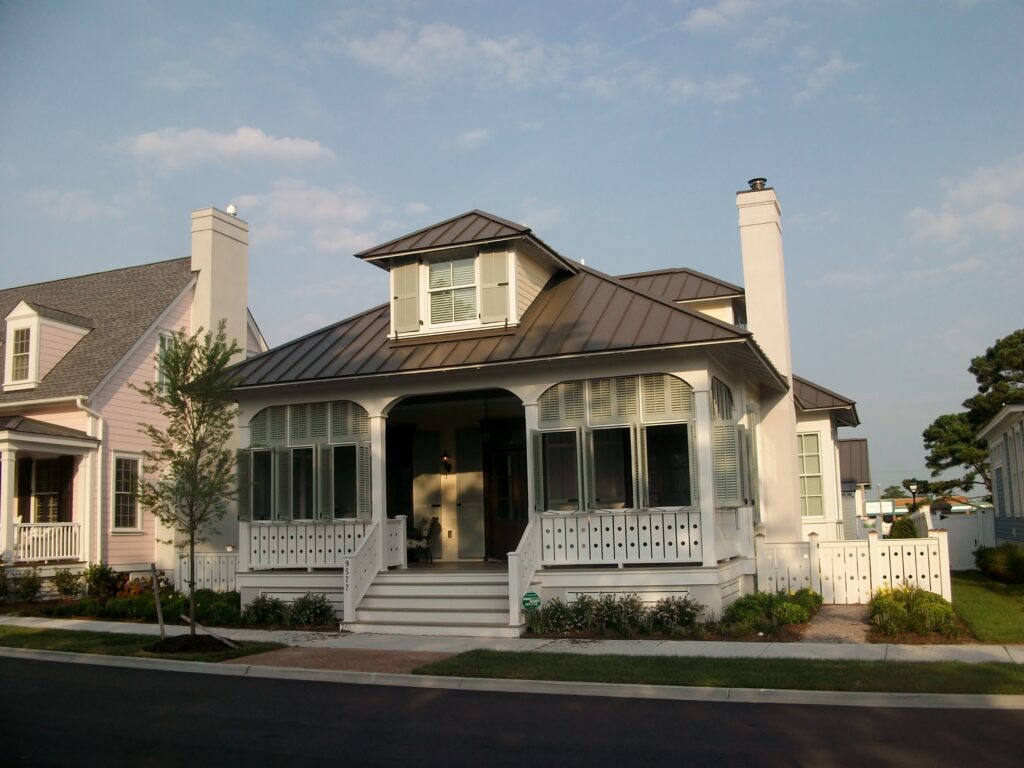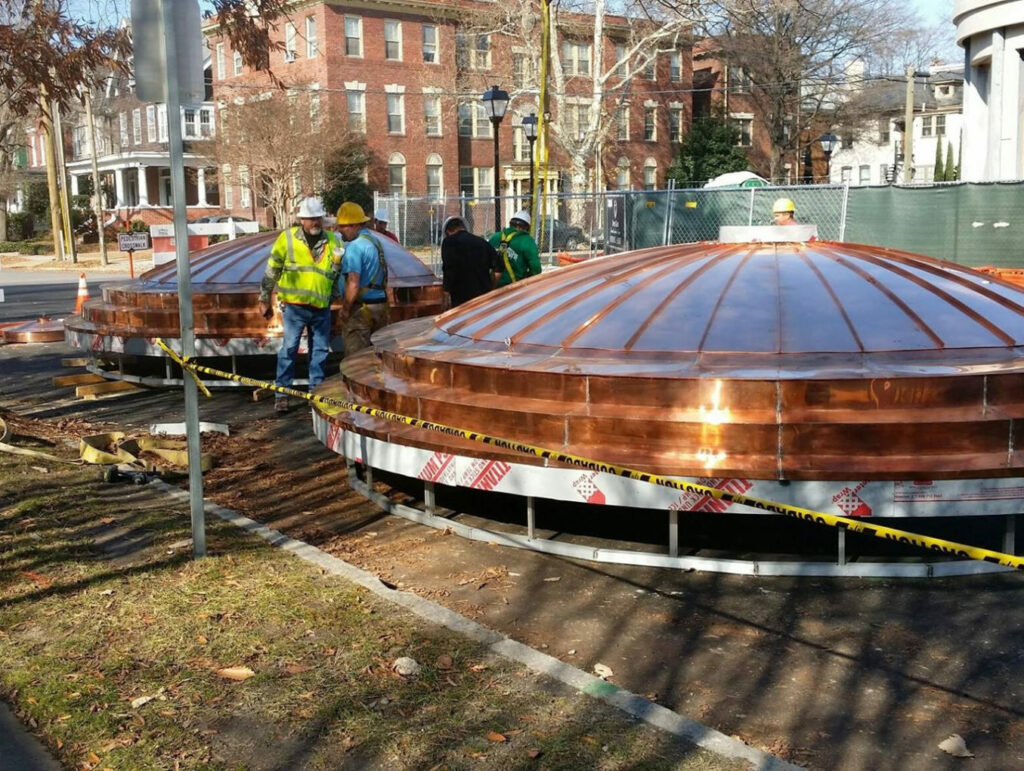Roof Systems
Roof Systems are divided into two broad categories: steep slope and low slope (flat). Each is described below. Steep slope roofs are found on most residential structures and on certain commercial buildings and apartment buildings. The latter may include both steep and low slope as part of the overall roof covering. Flat roof systems are found on most commercial and industrial buildings. Steep Slope All steep-slope roof systems (i.e., roofs with slopes of 25% or more) have five basic components:
- Roof covering: shingles, tile, slate or metal and underlayment that protect the sheathing from weather.
- Sheathing: boards or sheet material that are fastened to roof rafters to cover a house or building.
- Roof structure: rafters and trusses constructed to support the sheathing.
- Flashing: sheet metal or other material installed into a roof system’s various joints and valleys to prevent water seepage.
- Drainage: a roof system’s design features, such as shape, slope and layout that affect its ability to shed water.
Low Slope (flat) All low-slope roof systems (i.e., roofs with slopes of 0% to 24%) have five basic components:
- Roof covering: single-ply membranes (i.e. TPO, E.P.D.M., Modified Bitumen, P.V.C.), built-up systems (comprised of multiple layers of sheet material and asphalt sometimes covered with gravel or coating), metal, spray foam systems and underlayment that protect the sheathing from weather.
- Sheathing: wood boards, metal, concrete, gypsum, tectum and other fiberous type material that are fastened to roof rafters or joists to cover a house or building.
- Roof structure: rafters, trusses and joists constructed to support the sheathing.
- Flashing: sheet metal or other material installed into a roof system’s various joints and valleys to prevent water seepage.
- Drainage: a roof system’s design features, such as shape, slope and layout that affect its ability to shed water.
The best roof system solution for your home or building balances the five basic components listed above. Andrews Roofing addresses each of these components as part of our consultative approach to assessing needs and roofing conditions.The most visually impactful of these components is the roof covering.
To go directly to what you are most interested in, please click below.
– Choosing the Right Roof Covering
– Roofing Terms You Should Know
– Protect Your Roof From Its Enemies
– FAQs
Residential Roofing
Residential Roofing
A residential building is one in which people live. To be considered residential in the state of Virginia the building must contain no more than 4 private living spaces.
Commercial Roofing
Commercial Roofing
A commercial building is used for the purpose of conducting business. This may include a multi-family residential structure as well. Some examples include buildings used for retail, office, warehouse, churches, and apartment complexes.
Industrial Roofing
Industrial Roofing
An industrial building is used to manufacture consumable goods. Churches may also be classified as industrial structures.
Rapid Rain Gutter Systems
Rapid Rain Gutter Systems
The key to the Rapid Rain Gutter System’s uniqueness is the AR5600 Technology that provides a large capacity system that doesn’t look large or bulky, but achieves high-volume control of water flow.
Our Brands
Website built & maintained by Bull & Company MediaWorks




